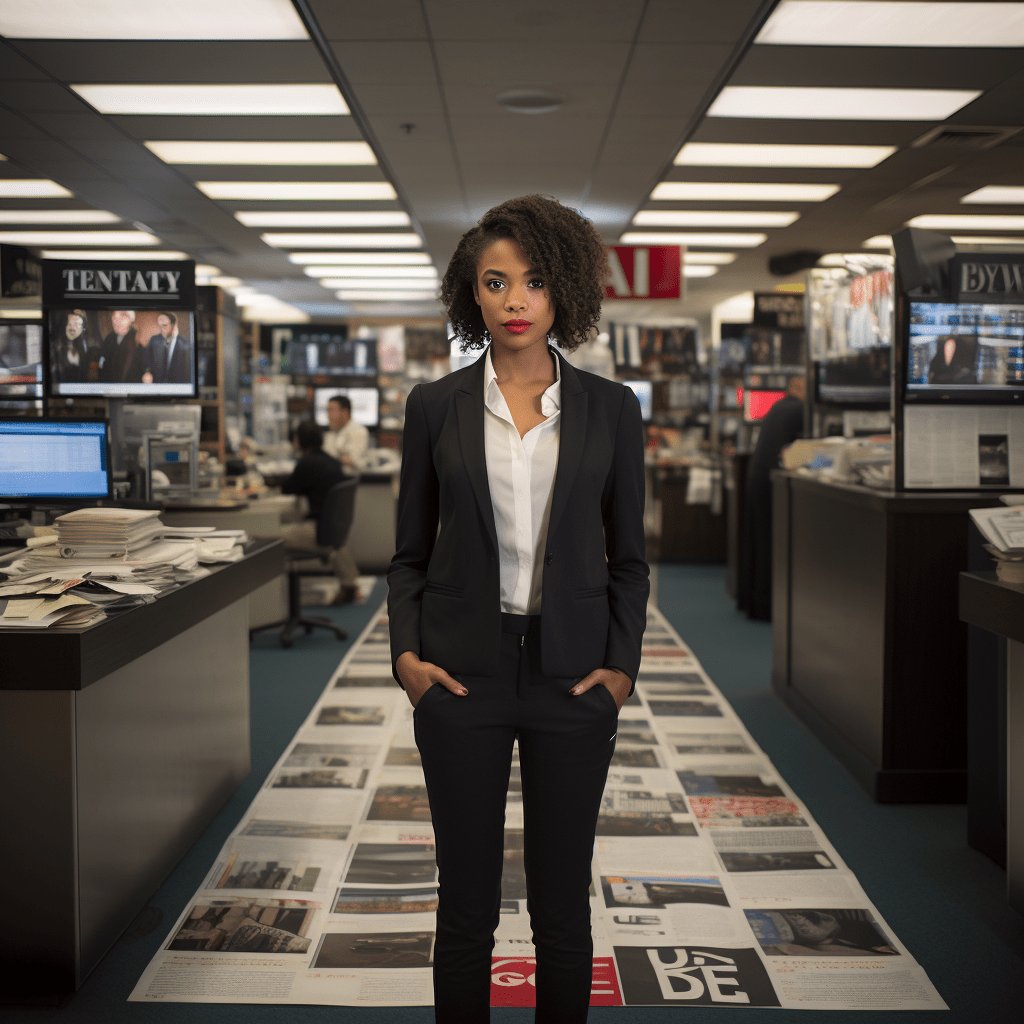Is Australia genuinely working towards a more inclusive and reflective media landscape?
A deep dive into the experiences of non-white journalists in Australian newsrooms, featuring in-depth interviews with journalists shedding light on their perspectives and challenges.
Cultural theorist Stuart Hall’s inquiries into challenging, contesting, or changing the dominant, often harmful, regime of representation are not outdated musings, but mirror the challenges faced by non-white journalists navigating the complexities of Australian newsrooms today.
It is widely-understood that news media not only sets the agenda but frames the coverage of every issue. Goodall and Jakubowicz identified how the lack of diversity in mainstream newsrooms perpetuates the status quo, reinforcing existing organisational cultures (1994).
This absence of diverse journalists has historically led to racist discourse. The Anti-Discrimination Board of NSW (2003) prepared a report that summarised the media as perpetuating ‘Australian racism’ unearthing an‘abundance of evidence’ to support these claims.
I chose to investigate to what extent the presence of non-white journalists in Australian newsrooms is affecting the way that news is being reported. What I discovered through in-depth conversations with four non-white journalists ages ranging from 27-34 with 5-8 years of experience, were the structural inequalities they faced – all interviewees reported encountering a racial objectivity bias — a pervasive scepticism that writers of colour can’t objectively tell stories about people of colour.
As one interviewee told me, ‘There is either a conscious or subconscious underlying idea… there is an inherent kind of bias.’
Another interviewee told me: ‘There is an idea that exists in all newsrooms in this country that the default storyteller is a white person, because they can somehow report on anything, and their objectivity is not questioned.’

The impact of such bias included questioning choice of stories to focus on, as one interviewee told me:
‘There is this moment where I think, do I need to pitch this story? Does it have to be me? Or are my colleagues going to think I am biased because I’m too close to the subject matter’
As the child of a migrant I have witnessed structural inequalities through my own mother’s struggles to fit into white hegemonic society; not being hired for any of the jobs she applied for (despite speaking fluent English), and never finding a group of white Australian friends who would welcome her in. My mother always wanted to be a journalist, co-incidentally I have become one.
I have worked as a photojournalist for a national, daily Australian newspaper, where I witnessed whiteness as an unstated reference point in the practice of journalism. My day consisted of shooting stories selected by Anglo-Celtic journalists that I did not think were accurately representing the status quo of society in that region. I stayed just 10 months in the role, then decided to quit, despite the lack of similar roles available in my profession.
My longing for the freedom to pitch and work on diverse stories stemmed from a longing to portray a more authentic Australia through my imagery—an Australia that I encountered daily in public spaces, reflected in the Spanish spoken at home, the Peruvian cuisine enjoyed, and the non-Australian values passed down by my migrant mother.

This aspiration for genuine representation aligns with the findings of a recent Media Diversity Australia (MDA) academic study. Their examination of Indigenous and cultural diversity in news and current affairs TV media concluded with a stark observation:
‘The Australian media fails to represent the society they serve’ (2022), and with the 2021 Census data, revealing that almost half of Australians have at least one parent born overseas (48.2 per cent), this underscores an urgent need for improved representation.
While the study acknowledged the aspiration of 19 editorial leaders in newsrooms to better reflect audience diversity, it also exposed the significant absence of non-white journalists in positions of power, and the career barriers they face.
Despite some media entities initiating ‘cultural diversity’ programs in the hiring of more diverse journalists, perhaps in response to dwindling trust in media content (Edelman Trust Barometer, 2022, showing only 43% of Australians trust what they read and see), my research suggests this comes at a cost to non-white journalists.
Interviewees expressed an overwhelming expectation to independently manage better representations of minority groups and diasporic communities in the newsroom, a responsibility they found reductive.

‘It’s not my job’, one interviewee said, ‘But you can’t help but feel that it becomes your job. It’s not our job to point it out to them. But the problem is, when we point it out to them, it falls on deaf ears.
This experience echoes the observations made by Cha and Roberts (2019) who identified that an organisation’s capacity to leverage diversity relies on its minority employees, positioning non-white journalists as ‘media interventionists’ tasked with challenging media power concentration in news institutions.
Despite efforts to enhance ‘cultural diversity,’ the burden often falls on non-white journalists to independently rectify misrepresentations across the newsroom, reflecting a systemic failure rather than a resolution as one interviewee summed up:
"It's tiring, it's really exhausting."
In order for Australian media to authentically reflect the society it serves in its reporting, essential changes are necessary. One interviewee suggested including more non-white editors and managers, coupled with establishing specialised reporting rounds focused on diaspora or migrant communities. This could offer increased avenues for non-white journalists to contribute their lived experiences, thereby elevating the quality and authenticity of news reporting. Moreover, dismantling the racial objectivity bias stands as a pivotal step toward creating a more inclusive and reflective media landscape.
Do these initiatives mark the starting point for a more inclusive and reflective media landscape?
Image credits: MidJourney Open AI (Creative Commons License)

